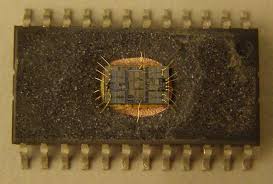 Reverse Engineering MCU ATtiny48V Eeprom
Reverse Engineering MCU ATtiny48V Eeprom
Reverse Engineering MCU ATtiny48V Eeprom physical structure in the reverse order of microcontroller ATtiny48v manufacturing, security fuse bit can be located and crack microcontroller‘s bit, so the firmware can be readout from MCU memory;

This section discusses the AVR core architecture in general. The main function of the CPU core is to ensure correct program execution. The CPU must therefore be able to access memories, perform calculations, control peripherals, and handle interrupts. In order to maximize performance and parallelism, the AVR uses a Harvard architecture – with separate memories and buses for program and data. Instructions in the program memory are executed with a single level pipelining.
While one instruction is being executed, the next instruction is pre-fetched from the program memory. This concept enables instructions to be executed in every clock cycle. The program memory is In System Reprogrammable eeprom memory. The fast-access Register File contains 32 x 8-bit general purpose working registers with a single clock cycle access time.
This allows single-cycle Arithmetic Logic Unit (ALU) operation.
In a typMCUal ALU operation, two operands are output from the Register File, the operation is executed, and the result is stored back in the Register File – in one clock cycle. Six of the 32 registers can be used as three 16-bit indirect address register pointers for Data Space addressing – enabling effMCUient address calculations.
One of the these address pointers can also be used as an address pointer for look up tables in eeprom program memory. These added function registers are the 16-bit X-, Y-, and Z-register, described later in this section.
The ALU supports arithmet and logic operations between registers or between a constant and a register. Single register operations can also be executed in the ALU. After an arithmetic operation, the Status Register is updated to reflect information about the result of the operation.
Program flow is provided by conditional and unconditional jump and call instructions, able to directly address the whole address space. Most AVR instructions have a single 16-bit word format. Every program memory address contains a 16- or 32-bit instruction after REVERSE ENGINEERING MICROCONTROLLER.